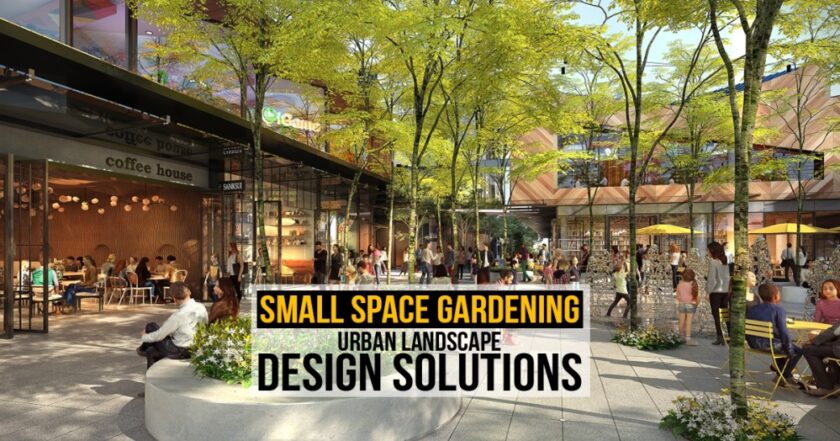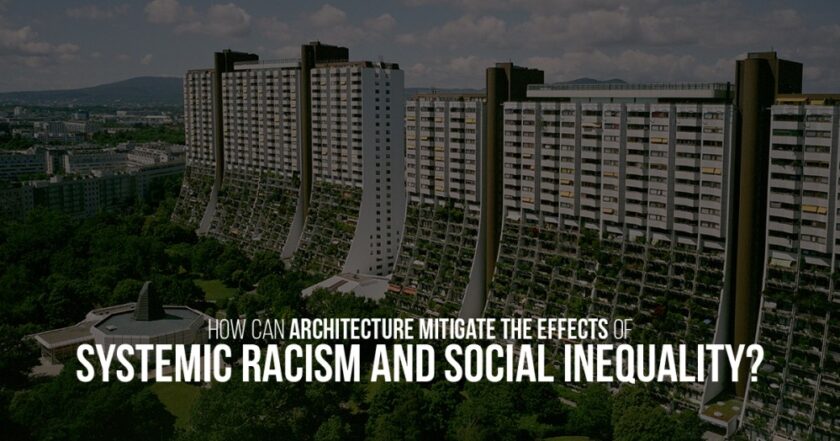Urban Landscape Design
Urban landscape design involves the planning, designing, and implementation of green spaces and landscaping elements within a city. It goes beyond aesthetics, aiming to enhance the functionality of urban areas by addressing visual appeal, environmental impact, community needs, and integration with existing infrastructure. The objective is to create spaces that improve the quality of life for residents and visitors by providing shade, promoting mental well-being, offering recreational areas, supporting wildlife habitats, and managing environmental concerns such as stormwater runoff and soil erosion. By thoughtfully layering natural ecosystems, human activity, and infrastructure, urban landscape design fosters a harmonious, sustainable, and functional urban environment.

Elements of Urban Landscape Design
Urban landscape planning integrates various elements that contribute to creating practical, visually appealing, and sustainable urban spaces. These components collectively enhance the well-being of residents, improve safety, and aid in the smooth functioning of city operations. The primary elements of urban landscape design include:
- Urban Mobility and Safety
Designing safe and accessible transportation involves careful placement of roads, sidewalks, parking facilities, and signage to ensure pedestrian and vehicle safety. Multi-lane roads, well-placed sidewalks, and strategic parking (public, private, commercial) with clear signs enhance accessibility.
- Public Spaces and Community Engagement
Public spaces encourage social interaction and relaxation. These should include amenities like benches, waste bins, information kiosks, and vendor booths. Accessible parking, well-lit walkways, and restroom facilities, including baby-changing stations, should be conveniently located near high-traffic areas like parks and entertainment zones.
- Cultural Identity and Visual Appeal
The city’s landscape reflects its cultural identity through art installations, historical landmarks, and landscaping. Public art, monuments, and educational institutions contribute to the city’s aesthetic, while trees, flowers, and water features enhance social and recreational spaces.
- Residential Neighbourhoods
Urban design improves residential areas by ensuring comfort and accessibility. This includes noise control, with residential zones away from disruptive areas, proximity to key services, and convenient transportation routes. Greenways and pathways connect residents to essential services such as schools, healthcare, and grocery stores.
- Public Institutions and Services
Public institutions are designed for easy access and public interaction. Educational and government buildings, such as post offices, emergency services, schools, libraries, and civic centres, are strategically located near residential areas. They are supported by landscaped surroundings and accessible pathways to encourage community engagement.

Principles of Urban Landscape Design
Urban landscape design varies across projects, but most architects aim to protect the natural environment, improve urban living, and craft sustainable, functional, and visually appealing spaces. Key principles include:
- Protect and Leverage Natural Ecosystems
Designers prioritise preserving natural elements, such as native plants and animal habitats, while integrating them into urban spaces to enhance living conditions. Critical ecosystems, especially those housing endangered species, are protected. Green corridors and native plant integration help with storm water management, air purification, and wildlife support, improving both the environment and urban life.
- Improve the Urban Experience
Urban landscapes focus on enhancing residents’ lives by promoting health, offering recreational opportunities, and fostering a sense of community. Green spaces reduce stress, improve mental well-being, and encourage physical activity. Well-designed landscapes can strengthen neighbourhood identity, improve social cohesion, and reduce crime.
- Build Sustainable and Practical Landscapes
Sustainable landscapes are adaptable to future changes and disasters. Strategies include using native plants, engaging the community in maintenance, and opting for low-maintenance, climate-appropriate design. Pedestrian-friendly features, such as shaded seating and durable paths, enhance comfort and accessibility.
- Design Visually Engaging Spaces
Urban landscapes should be visually appealing, balancing shapes, sizes, and textures. Colour and contrast add vibrancy, while focal points like fountains and parks create visual anchors. Inspiration from local architecture ensures relevance, and seasonal plants provide year-round interest, making cities aesthetically pleasing and functional.

Sustainable and Nature-Based Urban Landscape Design Solutions
Urban landscape design is essential in creating vibrant, sustainable, and functional cities. It goes beyond aesthetic appeal, serving multiple purposes such as improving environmental health, enhancing the quality of life for residents, and supporting economic growth. Below are key solutions that landscape architects and urban designers apply to create effective urban landscapes:
- Integrating Nature into Urban Environments
The integration of natural elements into city planning is crucial to ensure that urban spaces are both sustainable and livable. By using native plants, trees, and green spaces, cities can reduce environmental stressors like air pollution and stormwater runoff while improving the overall health of the ecosystem.
- Urban Greenery: Using trees and vegetation native to the region helps absorb pollutants, reduce carbon footprints, and manage stormwater. These natural elements also provide shade, reduce the heat island effect, and lower energy costs in buildings.
- Green Belts and Corridors: Preserving natural spaces such as parks, wildlife corridors, and wetlands offers critical habitats for local species while providing spaces for recreation and relaxation for urban dwellers.
- Biodiversity: By focusing on creating biodiversity through strategic planting and ecosystem management, urban designers foster spaces where local wildlife can thrive, adding to the city’s ecological richness.
2. Long-Term Sustainability and Adaptability
Urban landscapes must be designed to adapt to the changing needs of the city over time. This flexibility ensures that the space remains functional and relevant for future generations.
- Sustainable Planting Choices: Landscape architects often prioritise low-maintenance, native plants that are cost-effective and resilient to local weather conditions. These plants require less water, reduce the need for pesticides, and help preserve local wildlife.
- Energy and Resource Efficiency: Designing with the long-term sustainability of the landscape in mind encourages the use of natural resources efficiently. For example, incorporating solar-powered lighting, rainwater harvesting systems, and permeable surfaces for better water management can ensure the city remains resource-efficient for years to come.

Co-Benefits of Nature-Based Urban Landscape Strategies
Nature-based strategies offer numerous advantages in urban design, including improving environmental health, enhancing the quality of life, and supporting economic benefits. These strategies create sustainable solutions that go beyond the immediate needs of urban dwellers, ensuring that green spaces contribute to the overall resilience and prosperity of cities.
Introducing native plants, trees, and water features supports the biodiversity of urban ecosystems. This approach ensures that wildlife can flourish in cities, offering habitats and food sources for birds, insects, and other species. Integrating biodiversity into cities also provides environmental benefits, such as improving air quality and water management.
Access to nature and green spaces in urban areas has significant benefits for mental and physical health. Nature-based strategies, such as parks, gardens, and tree-lined streets, encourage outdoor activities, reduce stress, and improve overall well-being. Green spaces can also serve as community hubs, where social interactions foster a sense of belonging, reduce isolation, and promote social cohesion.
Nature-based solutions play a crucial role in enhancing climate resilience by mitigating the effects of climate change. Trees and vegetation absorb carbon dioxide, reduce the urban heat island effect, and help regulate temperatures. Moreover, urban green spaces can help manage stormwater, prevent flooding, and reduce the risk of soil erosion.
Nature-based urban landscapes contribute to the local economy by increasing property values, attracting businesses and tourists, and improving job opportunities. Green spaces and sustainable landscape designs also lower municipal costs associated with water management, energy usage, and infrastructure maintenance.

References List:
- Shade, U.S.A. (2020). Guide to Urban Landscape Design | USA SHADE Resources. [online] USA Shade. Available at: https://www.usa-shade.com/blog/guide-to-urban-landscape-design/.
- CSS_mainAdmin (2020). (Brief/Condensed) Guide to Urban Landscape Design – Creative Shade Solutions. [online] Creative Shade Solutions -. Available at: https://www.creativeshadesolutions.com/brief-condensed-guide-to-urban-landscape-design/ [Accessed 24 Nov. 2024].
- Urbandesignlab.in. (2024). Page Restricted. [online] Available at: https://urbandesignlab.in/nature-based-solutions-in-urban-planning/?srsltid=AfmBOoqtKnPsyOmO64tqJzlgBxyplVfQy-flbKlpwqygmojDG_fotQHE [Accessed 24 Nov. 2024].
Images / Visuals
- Mani, G. (2023). Seasonal plants, cycle tracks, selfie points part of Ring Road revamp plan. [online] The Indian Express. Available at: https://indianexpress.com/article/cities/delhi/seasonal-plants-cycle-tracks-selfie-points-part-of-ring-road-revamp-plan-8967295/ [Accessed 24 Nov. 2024].
- STREET DESIGN GUIDELINES. (n.d.). Available at: https://duac.org.in/Upload/City%20Level%20Studies/Transport%20studies/653962684171893.pdf.
- Anon, (2021). Mixed Use Plaza Design | Noëlla Aoun Design Studio. [online] Available at: http://noellaaoun.com/mixed-use-plaza-design/.
- https://worldlandscapearchitect.com/nature-based-city-of-almere-development-plan-2040/?v=13b5bfe96f3e
- Hartfield, E. (2024). 5 Key Benefits of Sustainable Landscaping for Cities. [online] Intelligent Living. Available at: https://www.intelligentliving.co/5-benefits-sustainable-landscaping-cities/ [Accessed 25 Nov. 2024].


As an architecture and interior designer, I am passionate about creating spaces that inspire and delight those who inhabit them. With over a decade of experience in the industry, I have honed my skills in both the technical aspects of design and the art of crafting beautiful, functional spaces.
After earning my degree in architecture, I began my career working for a prestigious firm where I was exposed to a wide range of projects, from commercial buildings to high-end residential properties. During this time, I developed a keen eye for detail and a deep appreciation for the importance of form and function in design.
In recent years, I have struck out on my own, founding my own design studio where I have been able to further explore my passion for interior design. I believe that a well-designed space can transform the way people live and work, and I take pride in working closely with clients to understand their needs and create spaces that exceed their expectations.
Throughout my career, I have been recognized for my innovative and creative approach to design, and have been honored with a number of awards and accolades. When I’m not working on design projects, you can find me exploring the outdoors or seeking inspiration in the world around me.



